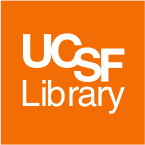The first factor of fair use centers around why you are using the portion of copyrighted material, and what you want to do with it. The courts generally favor, and it is written into the fair use statute, that nonprofit educational uses are favored over a commercial use of the copyrighted material. Courts also tend to favor transformative use, so when weighing this factor, think about whether or not your use is transformative. Types of transformative uses include parody, indexes, or criticisms; for example, if you took two different methods sections from two different papers and marked them up to illustrate to your students how one method was an example of an excellent research methodology, while the other was an example of a poor or incomplete methodology.
Even so, transformative use is not always necessary for the first factor to be determined as a fair use. The law explicitly states “teaching, including multiple copies for classroom use” as an example of a fair use. Non-transformative uses must rely more heavily on the non-commercial aspect of a use and the public or educational benefit of the use.
Check out these LibGuides for more information on copyright, fair use, and finding and using images:
Questions? Contact Peggy Tahir, Education & Copyright Librarian.

